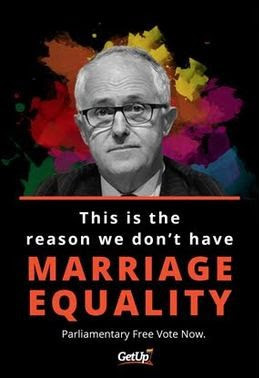Unfortunately HIV, as I've learnt from personal experience, isn't the sort of disease that simply lays down and dies simply because we think we have it under control. In my own personal life, there have been times when my own casualness about the disease has been rewarded with being clobbered over the bloody head with it. Perhaps HIV behaves in the same way community wide when said casualness is widespread?
The report is only getting released today so all I've seen is news articles about it, with the information being a bit sketchy. But some of it's informative. I was wanting to know where exactly the increase has come from, what parts of the country and what areas of the community.
HIV rates have increased substantially for the first time in five years, leading experts to warn that urgent action is needed to stop the spread of the virus.
Figures released today show that the number of new diagnoses increased by 8 per cent last year, and by 50 per cent during the past 10 years.
David Wilson, the head of the Kirby Institute's surveillance and evaluation program for public health at the University of NSW, said NSW, Victoria and the ACT had driven the increase.
''In these three states we have seen quite a significant rise in the last calendar year,'' he said.
Victoria experienced the biggest increase but in NSW more people were being picked up with HIV they had contracted only recently, as opposed to being picked up only after the condition had progressed.
Associate Professor Wilson said it was unusual for infectious diseases such as HIV to increase after they had been controlled but the lowest levels of HIV diagnosis in Australia were 10 years ago. ''We thought we had at least reached a plateau about five years ago but we have not,'' he said.
About 24,000 to 25,000 Australians live with diagnosed HIV but up to 10,000 might not have been diagnosed, he said.
The most recent increase in the number of new HIV cases diagnosed - from 1051 in 2010 to 1137 in 2011 - has been driven by increases among gay men, although in the past 10 years there have been rises in other groups.Read moreSo, the most recent increase is with gay men. I find that interesting. Gay men are the ones who know most about the disease, we have HIV campaigns targeted directly to us, so why is it increasing amongst us, of all people?
Much of the increase is put down to unsafe sex among gay men, who Mr de Wit says now view HIV/AIDS as no longer life threatening.Well, like I said, hardly surprising.
"What we see in parallel is that the number of men or the proportion of gay men who say that they've been having sexual risk has also increased gradually," Mr de Wit said.
"The meaning of HIV as a deadly disease has changed. "It's now chronic, manageable, which makes it less of a threat, which means that people take more risks than they would have done."
He says if the rate continues to increase, there are dramatic implications for public health as well as individuals.
"HIV still is a serious condition. There are effective treatments but they do involve taking pills every day for over the course of one's life," he said.
"It's a substantial burden on people's health as well as it is on the health system and on the economic system.
"There's a lot of costs involved as well." more
What I find most disturbing is the knowledge about HIV treatment, but at the same time almost an ignorance about the implications of an HIV diagnosis. It's not a bed of roses. It's not just taking a pill or two every day. There's a whole set of related issues that even when the HIV is undetectable you have to deal with. Being tired all the time is one. Disclosure, ignorance, and stigma is another. Even, will the modern drugs work as new multi-drug resistant strains of HIV slowly enter the community. They already found cases like that here in Australia. This from 2010:
Sydney doctors have reported the first 2 cases of multidrug-resistant HIV in Australia.How about that one for an HIV curve ball?
While 10-15 per cent of HIV infections in Australia are drug resistant, most are resistant to only one type of antiretroviral treatment. (As HIV is a retrovirus, anti-HIV treatments are termed 'antiretroviral'.) But the infections in the 2 Sydney patients were resistant to all 3 types of antiretroviral therapy. With these 2 cases, there are now 13 published cases worldwide of HIV infection resistant to all 3 types of therapy. more
HIV is a virus, so it will continue to adapt and mutate as we bring new treatments to the fore. Resistance happens when people don't take their pills rigidly at the same time every day and the HIV viral load gets an opportunity to increase in the blood, thereby the virus has more of a chance to mutate and produce resistant cells to the drug being taken. Not everyone is good at taking pills on time everyday.
Treatment has come a very long way. But HIV is a long long way from being beaten.















No comments:
Post a Comment